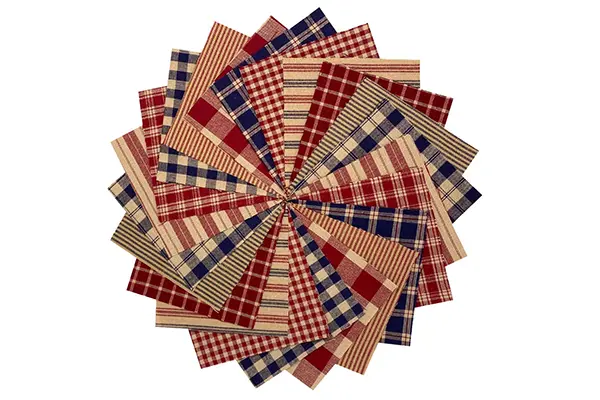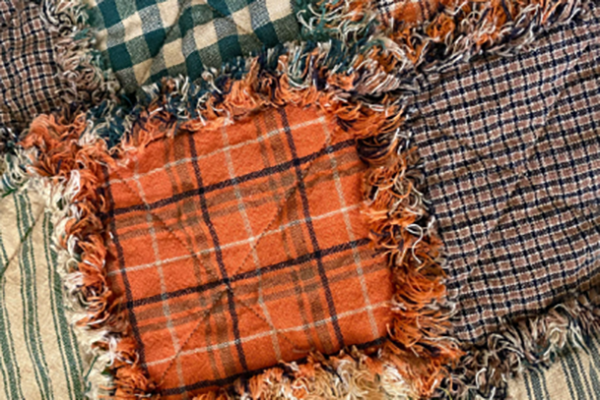Hello, I’m Allen, and from my position as a manufacturer and supplier in the textile industry, I’ve had the privilege of seeing countless types of fabric come to life. From high-tenacity threads to delicate yarns, I understand what procurement professionals like Mark Thompson in the USA look for: quality, consistency, and value. Today, I want to talk about a fabric that embodies a rich history and a unique rustic charm: homespun fabric. This article is for anyone who appreciates textiles with character—from quilters and crafters to garment makers. We will explore what makes this woven fabric so special, how to distinguish it from imitations, and why its imperfections are its greatest strength. It’s worth your time because understanding homespun fabric is understanding a piece of textile history that is still incredibly relevant and beautiful today.
What Is Homespun Fabric, Exactly?
At its heart, homespun fabric is a plain-weave cloth characterized by its rustic texture and the fact that it is yarn-dyed. This means the individual threads are dyed before they are woven into fabric. This is the single most important defining feature. Historically, as the name suggests, this was a fabric that women made at home. They would spin their own yarn from wool or flax, dye it with natural colorants, and then weave it into cloth for their families. Today, while the fabric is commercially woven in mills, it is designed to mimic the fabric and spirit of those early textiles.
The nature of the fabric is what gives it such a beloved, primitive feel. Unlike smooth, uniform muslins or brocades, a true homespun embraces its imperfections. Because of the looser weave and the quality of the cotton threads used, it’s common that fabric that occasional slubs occur. A slub is a small nub or thicker spot in the thread that adds to the material’s character. This rustic charm is why it’s a go-to choice for historical reenactments, country-style decor, and crafting projects that aim for a warm, traditional aesthetic.
It’s important to understand that the term "homespun" today refers to a style of fabric, not necessarily its method of production. While you can still find artisans creating handwoven cloth, the vast majority of homespun fabrics sold commercially are machine-made. Brands like Dunroven House have built a reputation on producing high-quality homespuns that capture the authentic look and feel of the original cloth. This modern production makes the fabric accessible and consistent enough for larger projects, like a full-sized quilt.
How is a Plaid Homespun Different from Printed Flannel?
This is a fantastic question and a point of confusion for many newcomers to this type of fabric. A plaid homespun and a printed plannel might look similar from a distance, but they are fundamentally different. The difference, once again, comes down to the dye.
As we’ve established, a homespun fabric is yarn-dyed. To create a plaid or stripe pattern, threads of different colors are carefully arranged on the loom before the weaving begins. The color is part of the thread itself, meaning the fabric is the same on both sides. If you cut a piece of plaid homespun, you’ll see the colors go all the way through the threads. This method is what gives the patterns their depth and rich, authentic look.
Printed flannel, on the other hand, starts as a solid white or neutral base fabric. The plaid pattern is then printed onto the surface, much like a design is printed on a t-shirt. Most flannels are screen printed. If you flip a piece of printed flannel over, the back will be pale or white. When this fabric starts to wear or fray, this white underside show through, which can detract from the look. The threads themselves are not fully dyed. While printed flannel is soft and often used for pajamas and blankets, it lacks the authentic, rustic quality of a genuine homespun fabric.

Why Does the Dye Lot Matter So Much with Homespun Fabric?
For anyone purchasing textiles in bulk, the term "dye lot" is a familiar one. With most modern fabrics, manufacturers strive for near-perfect consistency between batches. However, with homespun fabric, dye lot variations are not only common but are an integral part of its character. As a supplier, this is something I always emphasize to clients like Mark. Understanding this prevents surprises down the road.
The reason for this variation harks back to the historical weaving and dyeing process centuries ago. Dyers used natural materials like plants and minerals, and achieving the exact same shade twice was nearly impossible. Modern mills that produce homespuns often mimic this charming inconsistency. This means the color variations from one bolt of fabric to the next can be subtle or quite significant. The blue in a plaid from a new batch might be a shade lighter or darker than the one you bought six months ago.
This is why, when planning your first quilt using this material, it is absolutely crucial to buy all the yardage you need for a single project at one time. If you run out of a color mid-project and have to buy more, there’s a strong chance the new cut won’t be a perfect match. For some crafters, these slight shifts add to the primitive and country appeal of the finished item. But for a project that requires perfect uniformity, being aware that dye lot variations can be quite noticeable is key to a successful outcome.
What Makes This Cotton Fabric Perfect for a Rag Quilt?
If you’ve ever seen a rag quilt, with its soft, fluffy, exposed seams, you’ve seen the perfect application for homespun fabric. The unique construction of this fabric makes it the ideal choice for this cozy and rustic style of quilting.
The secret is in the looser weave and the cotton content. A rag quilt is made by placing small batting squares between two squares of fabric, sewing an "X" through them, and then sewing the squares together with the seam allowances exposed on the top of the quilt. After the quilt is assembled, you snip the seams every quarter-inch or so and wash the whole thing. This is where the magic happens. The washing process causes the snipped edges to bloom and fray beautifully.
Homespun fabrics are perfect for this because their looser weave creates more give and allows them to fray more easily and lushly than tightly woven quilting cottons. The fraying ability is a feature, not a flaw! The result is an incredibly soft and tactile edge that defines the look of the rag quilt. Because the fabric is yarn-dyed, the frayed edges are full of color, unlike a printed fabric which would fray to white threads. This makes homespun fabric the number one choice for anyone wanting to create an authentic and beautiful rag-style project.
What Are the Most Common Homespun Weave Patterns, Like Plaid and Stripe?
While solid-color homespuns are available, the most iconic and popular variations feature classic, simple patterns created directly by the weave. These patterns are timeless and evoke a sense of tradition and comfort.
The most recognizable patterns are stripes or plaids.
- Plaid: This is the quintessential homespun look. By alternating colors in both the warp (vertical) and weft (horizontal) threads, weavers create a timeless grid pattern. Plaid homespun can range from large, bold buffalo checks to more complex, multi-colored tartans. The slightly uneven texture of the thread gives the plaid a softer, more organic feel than a perfectly printed pattern.
- Stripe: A simpler but equally charming pattern, a stripe is created by grouping different colored threads in the warp. This results in vertical stripes running the length of the fabric. The width and color combinations of the stripes can vary endlessly, from thin pinstripes to broad, bold bands.
- Mini Check: This is a smaller, more delicate version of a plaid. A mini check pattern, often called a gingham check, alternates single threads of two different colors (often one color plus white or cream) to create a tiny, uniform checkerboard. It’s a classic pattern often used in aprons, curtains, and patchwork quilting.
Beyond these, you can also find other traditional woven patterns like ikats, although these are less common in the typical "primitive" style of homespun. The beauty of all these patterns is that they are literally woven into the very structure of the fabric.
Can You Use This Fabric for More Than Just a Quilt?
Absolutely! While homespun fabric is a quilter’s darling, its versatility extends far beyond the world of patchwork. Its soft hand, comfortable drape, and durable nature make it suitable for a wide range of applications.
Historically, this was the primary fabric for everyday life. It was well used in clothing for the entire family, from shirts and aprons to dresses and children’s clothes. Today, it remains an excellent choice for a rustic-style garment. A button-down shirt made from plaid homespun has a comfortable, broken-in feel right from the start. It’s also wonderful for historical costuming, especially for periods like the American Revolutionary War or depicting pioneer life.
Beyond clothing, homespun fabric is perfect for home decor. Its durability and charming aesthetic make it ideal for:
- Table Linens: Napkins, tablecloths, and runners made from homespun add a touch of country elegance.
- Curtains: The looseness of the weave allows light to filter through gently, creating a warm and inviting atmosphere.
- Pillows and Cushions: It adds a layer of cozy texture to a living room or bedroom.
- Craft Projects: It can be used in rag quilting, doll making, and creating decorative items that call for a primitive touch. The possibilities are truly extensive.
For the threads to sew these projects, a strong option like our High Tenacity Polyester Filament Thread ensures your creations will last.

What Should You Know Before Buying Homespun Yardage?
If you’re ready to start your first project with homespun fabric, there are a few practical things to keep in mind. Knowing what to expect will ensure a smooth and enjoyable creative process.
First and foremost, embrace the small imperfections. As mentioned, slubs and slight variations in the weave are a natural part of this fabric’s character. Don’t view them as flaws; they contribute to the unique quality in completed items. Second, always prewash your fabric! Homespun cotton fabric is known to shrink a fair bit on first washing, sometimes up to 10%. It also tends to release some excess dye. Prewashing your fabric before you cut and sew prevents your finished project from shrinking and warping, and it helps prevent colors from bleeding onto each other. Wash it on a gentle cycle and dry it on low heat.
Another tip is to be prepared for it to fray. That looser weave we love so much means the cut edges will unravel more than a standard quilting cotton. When you’re sewing, consider using a slightly larger seam allowance or finishing your seams with a zigzag stitch or serger to control the fraying. Finally, as we discussed, buy enough fabric to complete your project from the outset to avoid the headache of mismatched dye lots.
How Did Homespun Fabric Shape Early American Life?
To truly appreciate homespun fabric, it helps to understand its deep roots in history, particularly in early America. Before the industrial revolution brought large textile mills, producing cloth was a laborious and essential household chore. For colonial families and pioneers, homespun fabric wasn’t a style choice; it was a necessity.
The process was long and involved the entire family. Children might card the wool or linen fibers, women would spend countless hours at the spinning wheel turning fiber into thread, and then they would weave that thread into fabric on a large loom. The cloth they produced was utilitarian, durable, and essential for clothing, bedding, and sacks. The colors came from local plants, nuts, and berries, resulting in the earthy, muted tones we associate with the primitive style.
During the Revolutionary War, producing and wearing homespun became a political statement. It was a way for American colonists to boycott imported British textiles and show their support for independence. Wearing a garment made of simple, American-made homespun instead of fine British cloth was a symbol of patriotism and self-reliance. This rich history is woven into every strand of the fabric, giving it a depth and meaning that few other textiles possess.
How Can You Identify True Homespun Cotton Fabric?
With so many types of fabric on the market, how can you be sure you’re looking at an authentic-style homespun? There are a few key characteristics to look for that will help you identify the real deal.
The first and most reliable test is to check if it’s yarn-dyed. Gently pull a single thread from the edge of the fabric. Is the color consistent all the way through the thread? If it is, you’re likely looking at a homespun. If the thread is white in the center or has color only on the surface, it’s a printed fabric. This is the easiest way to distinguish it from printed flannel or other imposters.
Next, examine the weave and texture. A homespun fabric will have a slightly looser, more open weave than a standard quilting cotton. Hold it up to the light; you may be able to see more light passing through it. Feel the surface. It should have a soft but slightly coarse, rustic hand-feel. Look for those characteristic slubs and minor irregularities in the threads. A fabric that is perfectly smooth and uniform is probably not a homespun-style textile. The combination of these visual and tactile clues will tell you that you have an authentic piece of homespun cotton. The raw material for such a weave is critical, which is why quality starting materials like our Cotton yarn are so important.
What Are the Best Practices for Sewing and Caring for Homespuns?
Sewing with homespun fabric is a pleasure, but a few adjustments can make the experience even better. Because of its tendency to fray, it’s a good idea to handle cut pieces minimally. When sewing seams, a slightly shorter stitch length can help secure the weave. Using a good quality, strong thread is also recommended to hold everything together securely. As for needles, a universal needle size 80/12 is usually a great choice for this weight of cotton fabric.
Caring for your finished homespun items is straightforward. As a general rule, treat them gently. Machine wash on a cool, gentle cycle with like colors. Using a color-catcher sheet in the first few washes is a good idea to catch any residual dye. Tumble dry on low heat or, for items you truly cherish, consider line drying. A little bit of extra care will preserve the beauty and integrity of your homespun creations for years to come.
Whether you’re a quilter, a crafter, or a procurement officer looking for authentic textiles, homespun fabric offers a unique blend of history, texture, and timeless appeal. It’s a testament to the enduring beauty of simple, well-crafted materials. For other crafting needs, a versatile Yarn ball can also provide a cozy, rustic feel to your projects.
Key Takeaways to Remember
- It’s All About the Dye: True homespun fabric is yarn-dyed, meaning the threads are colored before being woven. This gives it color on both sides and distinguishes it from surface-printed fabrics like flannel.
- Embrace Imperfections: The rustic charm of homespun comes from its looser weave and occasional slubs (thicker spots in the thread). These are features, not flaws.
- Prewash Your Fabric: Homespun is known for shrinking and bleeding a little dye on the first wash. Always prewash your yardage before cutting to ensure your project stays true to size.
- Perfect for Rag Quilts: The looser weave allows the fabric to fray beautifully, making it the number-one choice for creating soft, fluffy rag quilts.
- Buy Enough at Once: Due to variations in dye lots, you should always purchase all the fabric needed for a single project at the same time to ensure a consistent color match.





